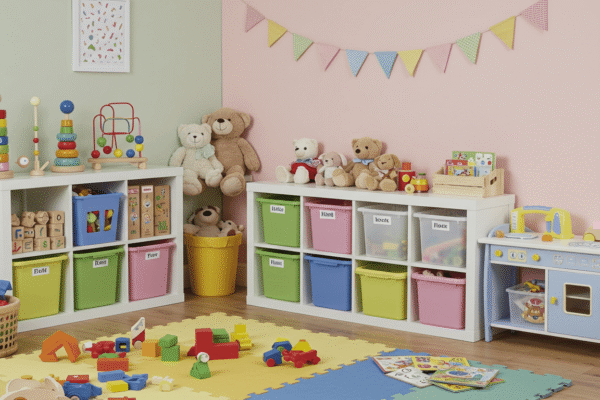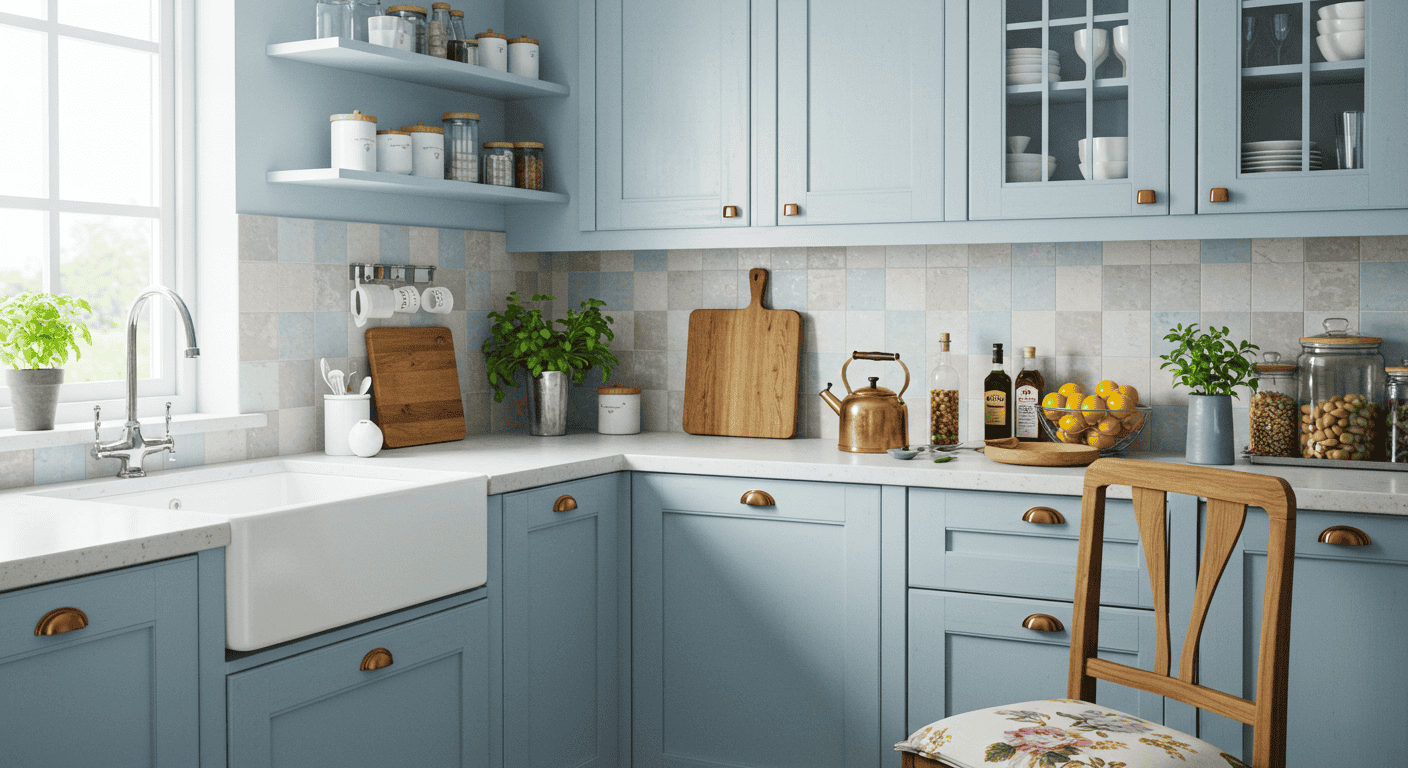Every home has untapped potential hiding in plain sight, and few places hold more promise than the kitchen’s corners. This guide turns wasted space into working space by combining practical layout science, ergonomic clearances, and creative design thinking that breathe life into even the most stubborn nooks. Throughout, the focus remains on building Cooking Corners that are easy to access, pleasing to use, and simple to maintain over time, so daily routines feel smoother and storage feels smarter instead of cramped or chaotic.
Whether planning a new build or refining an existing layout, the best results come from a clear structure: choosing a layout that respects movement patterns, matching corner mechanisms to real item categories, and protecting comfort with thoughtful measurements. The approach here avoids gimmicks, favors reliable techniques, and shows how to make Cooking Corners support everything from speedy weeknights to relaxed weekends, all while keeping the space coherent, bright, and enjoyable to be in.
Before diving in, a helpful internal resource for related home tips and practical improvements can be found on ameliastips.com for more room-by-room guidance and organization strategies that complement these Cooking Corners upgrades. For additional background on layout fundamentals and why distance and placement rules still matter today, reputable design references explain how traditional movement patterns translate into modern zoning and workflow, offering context that elevates design decisions without forcing a one-size-fits-all rule. A trustworthy external primer on kitchen layout concepts can be found via this comprehensive overview of kitchen layouts.
Smart Corner Mechanisms
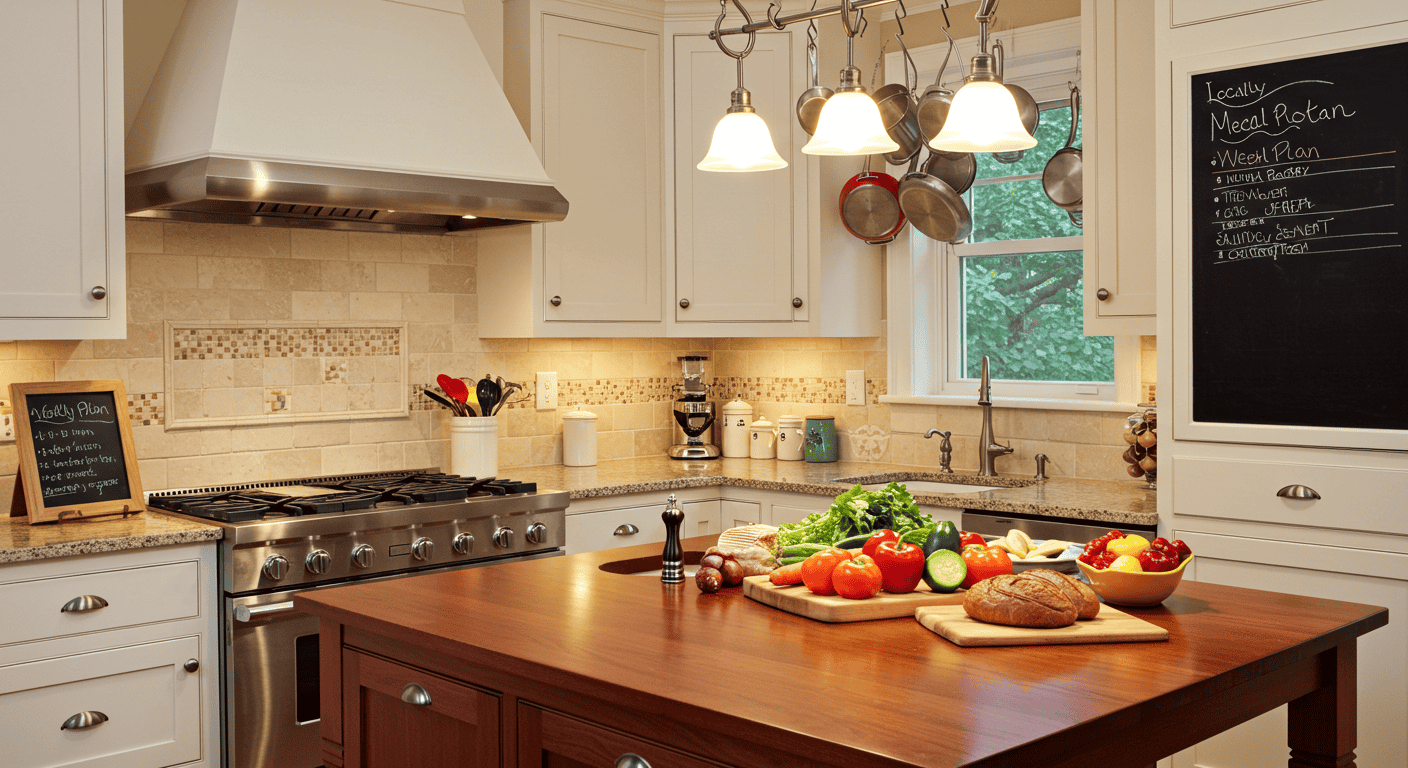
Intelligent corner hardware transforms difficult dead zones into useful, everyday storage. The goal is not to chase complexity but to choose the simplest mechanism that delivers reliable access to the items actually stored in that spot. Good Cooking Corners solutions bring items forward, maintain visibility, and minimize excessive bending or digging. Consider the mix of round trays, articulated pull-outs, or angled drawers to balance capacity with comfort. Matching mechanism to item type—light pantry goods versus heavy cookware—keeps the system from feeling fussy and ensures the corner becomes a low-friction part of the daily routine.
Lazy Susan and Carousel Trays
Rotating trays excel when quick access and broad visibility are more important than packing every possible cubic inch. These circular or kidney-shaped platforms make small packages, jars, and snack containers easy to see and reach, which can be a major win for Cooking Corners that function as auxiliary pantry space. Because shelves spin, the back of the cabinet is effectively brought to the front, limiting awkward reaches and minimizing time spent rummaging. The tradeoff is the geometry: round surfaces inside square boxes leave small gaps, so the efficiency gain is about speed and ergonomics rather than strict volume.
Table — Corner Mechanisms at a Glance
| Mechanism | Best For | Access | Space Efficiency | Ideal Items | Notes |
|---|---|---|---|---|---|
| Rotating trays | Quick-grab Cooking Corners | Excellent visual reach | Moderate due to round geometry | Jars, snacks, small pantry goods | Prioritize smooth rotation and stable railings |
| Articulated pull-outs | Deep blind corners | Brings items forward | High when well-fitted | Cookware, bulk staples, small appliances | Confirm load capacity and glide quality |
| Corner drawers | Frequent-use zones | Straightforward, intuitive | High for squared storage | Utensils, linens, mixing tools | Angled fronts reduce door conflicts |
| Diagonal cabinets | Clearance management | Good, simple hinges | Moderate depending on shelf plan | Light pantry and serveware | Useful where door swings collide |
Magic Corner and Blind Pull-Out Systems
Articulated frames solve the classic blind corner challenge by pulling hidden contents into the light. These systems shine in Cooking Corners where the cabinet depth is generous but human reach is not. The real benefit is continuity: even heavy, seldom-used gear can be stored out of sight yet retrieved with minimal strain. Set expectations around weight ratings and motion feel, because daily use exposes any wobble or friction quickly. A well-tuned unit handles pots, pans, and appliances confidently and turns an awkward void into productive storage without sacrificing the adjacent run’s flow.
Corner Drawers and Diagonal Cabinets
Corner drawers appeal to cooks who prefer straightforward, grid-like organization instead of rotating platforms or complex arms. Their angled fronts clear neighboring handles and reduce door clashes, which is especially helpful in compact Cooking Corners near dishwashers or ranges. Diagonal cabinets, by contrast, simplify the corner face and open up sightlines, trading some interior capacity for cleaner traffic and easier door management. Both options keep the focus on smooth use rather than novelty, making them strong fits for kitchens where routine and reliability matter most.
Layout First: Triangle and Zones
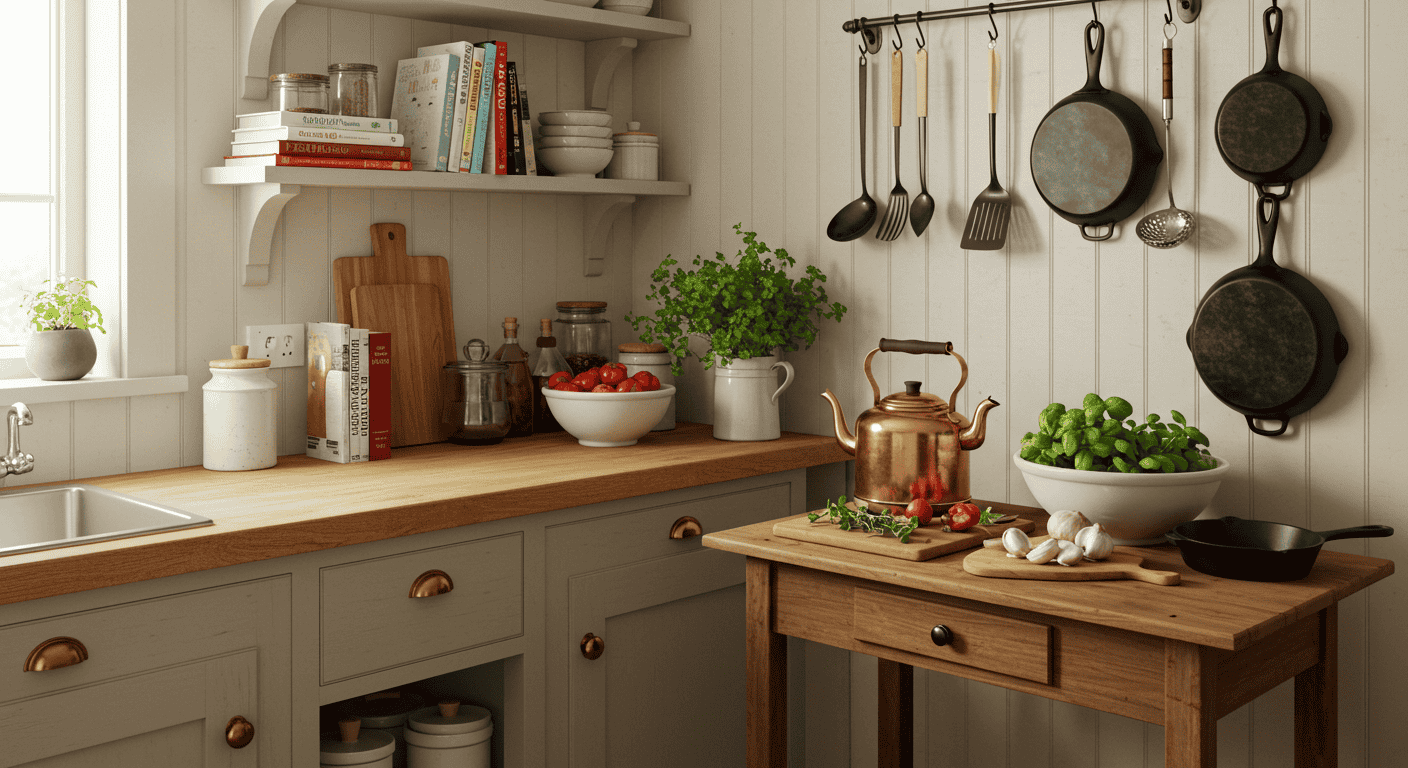
Before choosing hardware, step back and weigh the kitchen’s overall structure. Movement patterns and line-of-sight considerations often determine whether a corner should act as a pantry hub, a prep support point, or a transition area. Classic movement patterns continue to be useful because they reduce unnecessary steps, while modern zoning tailors the plan to real activities like prepping, cooking, cleaning, snacking, and serving. Good Cooking Corners respect these flows by staying out of the way of major traffic, supporting clear handoffs between tasks, and protecting the primary prep area from clashes and crowding.
Work Triangle Essentials
Movement efficiency matters, especially in busy households. Keep key points within a comfortable loop that shortens the rinse-chop-cook sequence, reduces backtracking, and creates predictable paths around corners. Thoughtful Cooking Corners don’t steal space from this loop; they assist it by holding secondary items or by acting as auxiliary staging zones. Pay attention to aisle widths and door swings so the corner doesn’t become a pinch point, and remember that smooth circulation today prevents frustration tomorrow, particularly when more than one person uses the kitchen at once.
Modern Zones in Corner Planning
Zones translate movement ideas into concrete storage and surface choices. Pantry items close to refrigeration, cleaning tools near the sink, and prep tools between sink and cooktop reinforce natural sequences that keep Cooking Corners purposeful instead of decorative. Corners often excel as pantry extensions or as satellite prep stations where knives, boards, and bowls stay ready for action. With zones marked, it becomes obvious which mechanism matches the role: rotating trays for quick snacks in a family zone, pull-outs for bulk goods in a pantry zone, or drawers for tools in a heavy-prep station.
Table — Key Measurements Cheat Sheet
| Area | Recommended Range | Corner Watchouts | Practical Tip |
|---|---|---|---|
| Work aisles | Approx. 42–48 in | Avoid opposing door collisions | Stagger hinges away from corners |
| Prep run length | At least 36 in | Don’t crowd sink corner | Keep boards and bins within arm’s reach |
| Landing by cooktop | 12–15 in minimum | Don’t put both doors at the corner | Use the corner as a drop zone if clear |
| Fridge landing | 15 in on pull side | Door swing into corner walls | Place pantry zone near fridge |
Small-Space Wins
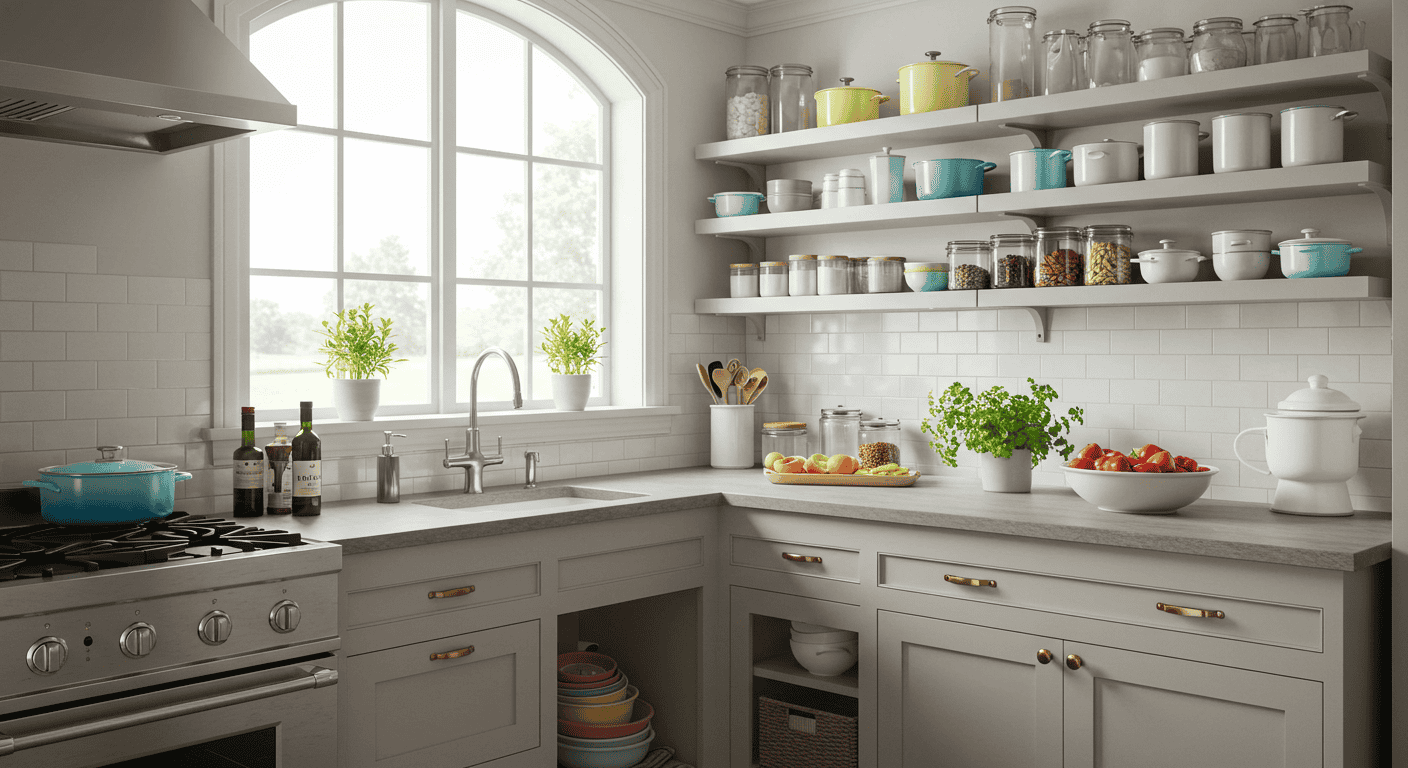
Compact homes demand clarity of purpose for every cabinet and surface. In small Cooking Corners, prioritize mechanisms that bring contents into the light with a single, simple motion. Focus on keeping aisles forgiving and corners unobstructed by conflicting door swings. By shaping the corner to the room’s most common routines—like morning breakfasts or nightly cleanups—it becomes a helpful station rather than a snag that interrupts flow. A few well-placed organizers, a clean sightline, and disciplined item categories go a long way toward making a tight space feel generous.
Studios and Tiny Homes
In very small apartments, corners work best when they do one job exceptionally well. A rotating tray zone for snacks and quick-grab pantry goods, or a compact pull-out for the daily cookware set, streamlines decisions and reduces visual noise. These Cooking Corners shine when they shorten setup and cleanup times, so favor mechanisms with smooth, single-handed operation, clear visibility, and steady motion. Because the same few feet serve multiple roles in tiny homes, keep the corner simple, maintain a flexible surface nearby, and avoid stacking too many features into one cabinet.
Open-Plan and Galley
Open spaces invite social activity, but they also increase foot traffic that can collide with active cooking. In these kitchens, corners are ideal for storage that supports the main stage without stealing attention. A galley layout, on the other hand, lives or dies by its aisle width and uninterrupted runs, so corners should avoid creating choke points or clashing handles. The most successful Cooking Corners in these formats help maintain a steady rhythm: hands glide between stations without needing to sidestep doors, and tall items stay in zones where their doors won’t block the flow.
Table — Small Layout Playbook
| Layout Type | Corner Role | Best Mechanism | Aisle Target | Traffic Tip |
|---|---|---|---|---|
| Studio one-wall | Snack/pantry hub | Rotating trays | Max possible within room | Keep handles slim to avoid snags |
| Open L-shape | Secondary prep support | Corner drawers | Comfortable shared path | Orient hinges away from seating |
| Galley | Low-conflict storage | Diagonal cabinet | 42–48 in clear | Prevent opposing door overlap |
Storage That Actually Works
The most satisfying storage is predictable: each category has a home, and retrieving it never feels like a chore. Corners can deliver this if the mechanism is matched to the load. Light, frequently used pantry items reward visibility and fast access, while heavy cookware benefits from sturdy pull-outs that present contents at waist height. Thoughtful Cooking Corners also anticipate the maintenance side—wiping spills, reorganizing after a big shop, and adjusting to seasonal needs—so the system stays efficient long after installation day.
Corner Pantry vs. Base Corner
Tall corner storage acts like a command center for packaged foods, but it eats counter space and can dominate a wall. Base corners extend the prep surface and keep tools close to the action but offer less vertical capacity. The right choice hinges on the kitchen’s bottleneck: if counters feel cramped, liberate them with a base corner and a smart drawer stack; if groceries overflow, a corner pantry stabilizes the weeks between shopping trips. Either way, the Cooking Corners decision should reduce daily friction, not add a new spot that’s hard to keep in order.
Organizers That Matter
Within any chosen mechanism, organizers help avoid clutter and wasted motion. Adjustable dividers, shallow bins, and railings that prevent tip-over events keep small items under control, while deeper frames and firm glides make heavier gear feel effortless to handle. In Cooking Corners, lighting is a silent ally—an inner light that wakes with the door or a targeted task source above the counter reduces rummaging and keeps delicate items safe. Start with just enough organization to keep categories distinct, and only add complexity if a particular habit makes it necessary.
Table — Corner Storage by Item Type
| Item | Best Spot | Mechanism | Why It Works | Access Score |
|---|---|---|---|---|
| Spices and jars | Tall or base corner near prep | Rotating trays | Fast visual scan | High |
| Pots and pans | Base corner by cooktop | Pull-out frames | Strong support, easy reach | High |
| Mixing bowls | Prep-side base corner | Corner drawers | Nestable, stable, quick grab | High |
| Baking sheets | Adjacent base, not deep corner | Vertical dividers | Prevents jamming | Medium |
| Snacks | Tall corner pantry | Shelves with bins | Category control | Medium-High |
Ergonomics and Clearances
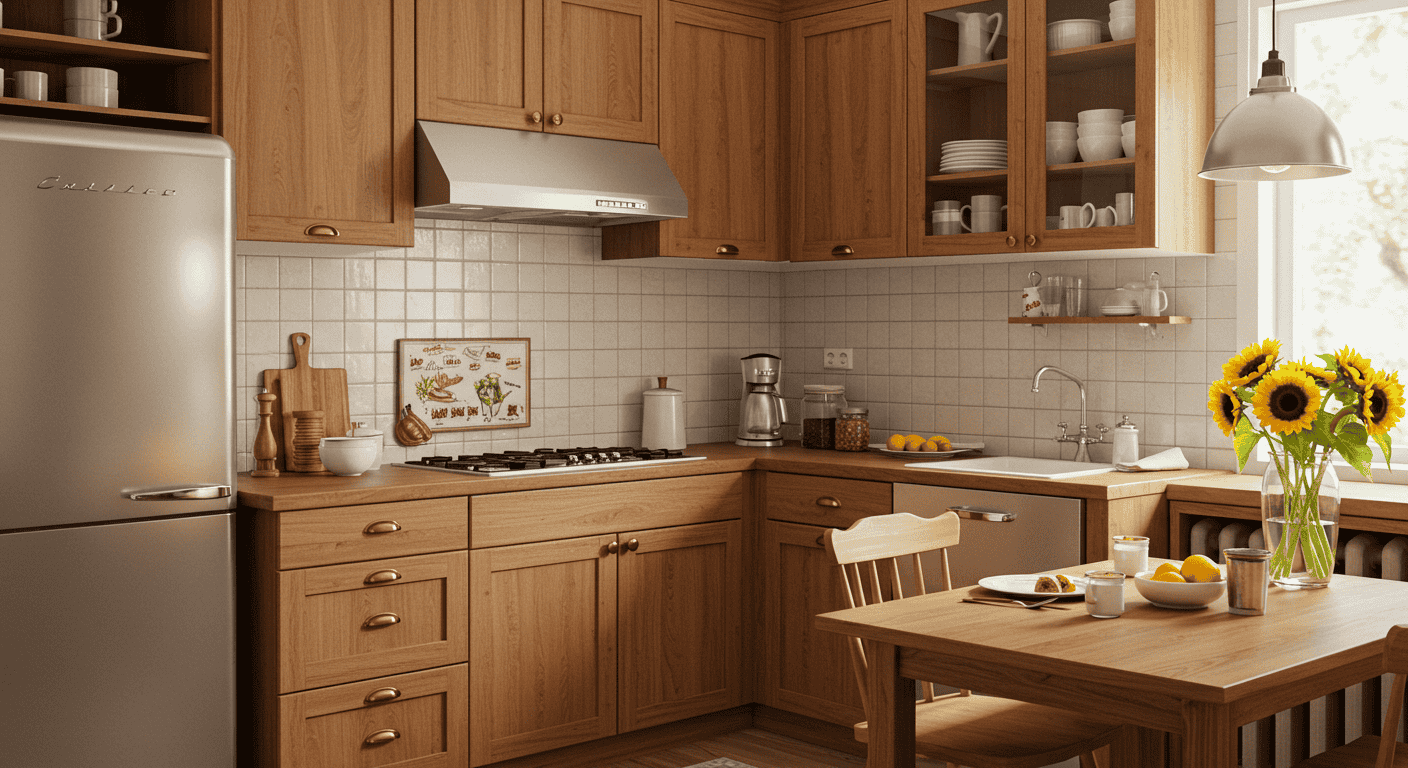
Comfort is the quiet foundation of every great kitchen. Without breathable aisles and safe landing spots, even the smartest storage becomes a liability. A well-planned corner never steals elbow room from the prep zone or blocks a door when patience is thinnest. In Cooking Corners, think about posture as much as capacity: if a task demands frequent bending, use a mechanism that raises the load into view; if an appliance door must open into a walkway, offset hinges or switch which side carries the largest handles.
Aisles, Doors, and Swings
Aisle width is more than a number; it’s the difference between a calm morning and a traffic jam. Doors that open into each other or into a narrow pass can turn corners into stress points. The most sensible Cooking Corners plan choreographs motion: one person empties the dishwasher while another preps, and neither blocks the other. Keep the heaviest, most frequent doors away from the corner’s tightest angles, and consider how guest traffic moves during gatherings so social flow doesn’t collide with hot pans and sharp tools.
Landing and Prep Zones
Hot trays, full pitchers, and heavy pots need safe places to land fast. That means protecting small counter stretches near the cooktop and fridge, and guarding a long, uninterrupted prep zone between sink and heat. In this light, Cooking Corners can be lifesavers or liabilities. If the corner is clean and clear, it becomes a natural staging point where transfers happen smoothly; if it’s cluttered or blocked by a door, it becomes the spot where everything slows down. Reserve this space for handoffs and light prep, and let the deeper storage live a step away.
Table — Clearance and Landing Guide
| Area | Minimum Space | Corner Watchouts | Safety Tip |
|---|---|---|---|
| Cooktop landing | 12–15 in | Corner clutter | Keep one corner face clear |
| Fridge landing | 15 in pull side | Door hits corner run | Flip hinge or shift unit |
| Dishwasher door | Full door depth | Blocks corner access | Stagger placement by one cabinet |
| Main prep run | 36 in continuous | Corner eats surface | Move bins and boards to edge |
Style, Light, and Finish
Function sets the stage, but finishing details make daily use delightful. Corners sit at the intersection of multiple planes, so a few visual choices ripple throughout the room. Consider open shelves or glass-fronts above a base mechanism to relieve visual weight, and keep finishes consistent so the corner feels integrated rather than patched in. Thoughtful lighting turns Cooking Corners into showcases of calm efficiency—when every shelf glows gently and shadows disappear, the entire kitchen feels more inviting and less cluttered, even before any storage upgrade goes in.
Open vs. Closed in Corners
Open elements invite frequent use and reward tidy habits, while closed cabinetry hides larger categories and protects equipment from dust. Many kitchens thrive on a mix: an open or glass segment above eye level for lightness, with a robust base corner mechanism to carry the daily weight. In Cooking Corners, this blend keeps the corner from becoming a block of cabinetry and lets the room breathe visually. Small trims, clean handles, and aligned reveals tie the composition together so the corner reads as designed rather than improvised.
Light the Deep Spots
Light is a tool, not decor. Inner cabinet lights triggered by door motion take the guesswork out of deep storage, and focused task sources above the counter prevent shadows during prep. When Cooking Corners are bright and evenly lit, it’s easier to put things back, easier to spot spills, and easier to keep categories tidy. Aim for consistent color temperature across the kitchen and avoid harsh glare directly at seated areas, especially in open plans where the corner sits in the social line of sight.
Table — Visibility Boosters
| Solution | Best Location | Use Case | Setup Tip |
|---|---|---|---|
| Inner cabinet lights | Deep corner units | Fast retrieval | Door-activated switches |
| Under-cabinet task light | Corner counter span | Shadow-free prep | Consistent color temperature |
| Glass-front with dim light | Upper corner display | Visual lightness | Low-glare placement |
Decision Frameworks and Trade-offs
Great decisions come from honest priorities. If ergonomic ease and daily speed outrank absolute capacity, choose mechanisms that put items in clear view with minimal motion. If bulk storage is the pain point, dedicate the corner to sturdy, high-capacity frames and let smaller categories migrate elsewhere. The best Cooking Corners result from ranking needs, then picking hardware, organizers, and finishes that serve that ranking. A simple matrix helps settle debates before installation and keeps scope aligned with the actual problems being solved.
Choose the Right Mechanism
Start with item size, weight, and frequency. Light, often-used goods want fast, open access; heavier or occasional items can live in deeper frames that move to meet the hand. Corners that intersect with busy aisles should avoid door conflicts and prefer drawers or diagonal faces. When in doubt, prototype the category plan with cardboard boxes in the space and walk through a day’s routine. This low-tech rehearsal reveals whether the Cooking Corners choice truly fits life in motion rather than a perfect still photo.
Cost vs. Function Justifications
Budget realism protects satisfaction. Complex mechanisms can be worth it when they solve a daily frustration, but simpler trays or drawers often meet the brief at a lower cost and with fewer parts to maintain. A curated mix typically wins: one hero mechanism in the hardest Cooking Corners paired with straightforward storage elsewhere. Invest where hands work hardest and eyes look most often, and save on hidden spans that primarily hold bulk items with modest access needs.
Table — Mechanism Selection Matrix
| Priority | Best Choice | Why | Corner Risks | Setup Notes |
|---|---|---|---|---|
| Fast daily access | Rotating trays | See-and-grab speed | Reduced cubic efficiency | Set shelf lips to prevent spills |
| Heavy cookware | Pull-out frames | Weight handling | Glide wear over time | Confirm load rating and adjusters |
| No door conflicts | Corner drawers | Clean clearances | Angled face planning | Check adjacent handle spacing |
| Simplest install | Diagonal cabinet | Fewer moving parts | Less interior volume | Use adjustable shelves |
Real-World Scenarios
Abstract rules become powerful when tested against everyday life. By mapping common household patterns onto specific layouts, it becomes clear how to align corners with routines. The following examples translate priorities into concrete choices that keep Cooking Corners helpful year-round. Use these as starting points to sketch a personal plan, then adjust for special hobbies, dietary needs, or family rhythms that may shift which categories deserve premium space closest to the action.
Family Kitchen with Two Cooks
When two people cook together, collisions happen where aisles narrow and doors overlap. The fix begins at the corner: choose mechanisms that don’t project far into walkways and store bulk items that don’t trigger constant opening during dinner rush. A thoughtfully lit corner with a clear landing patch lowers tension during peak times. In these settings, Cooking Corners work best as supportive wings—staging mixing bowls, colanders, and dry goods—while the hottest tools remain in easy-to-reach drawers along the primary prep run.
Solo Cook, Compact Space
Small kitchens can feel luxurious when the routine is uninterrupted. Prioritize rotating trays or compact pull-outs that allow one-handed operation and instant visibility. Keep the corner adjacent to the main prep area uncluttered so it can serve as a spillover zone for chopping and assembling. With the right Cooking Corners choice, the entire experience becomes smoother: fewer stops to reconfigure, fewer conflicts with doors, and faster cleanups powered by a system that naturally puts everything back where it belongs.
Table — Scenario Playcards
| Scenario | Corner Solution | Layout Tweak | Ergonomic Gain |
|---|---|---|---|
| Two cooks at once | Corner drawers | Wider aisle planning | Reduced door collisions |
| Solo, tiny home | Rotating trays | Clear corner landing | Faster grab-and-go |
| Family snack zone | Tall corner pantry | Near-fridge position | Fewer cross-traffic steps |
FAQs Corner
Quick answers can prevent second-guessing and keep momentum strong. These concise, practical notes tackle common sticking points and help refine choices. Treat them as a confidence check before ordering hardware or committing to a cabinet plan. When Cooking Corners are built on clear expectations and a shared understanding of trade-offs, the result is a kitchen that feels calm, capable, and genuinely enjoyable to use.
Is the triangle outdated?
No. Movement guidelines still provide a helpful baseline for minimizing steps and conflicts, even as modern zoning enriches the plan with nuanced roles for each area. Good Cooking Corners respect both ideas, using the triangle to prevent crowding and zones to support real tasks like prepping, serving, and cleaning without stepping on each other’s toes.
Corner pantry or carousel?
Choose based on item type and frequency. If the aim is fast visibility and daily snacking, rotating trays win; if the pain point is bulk storage for longer stretches between shopping trips, a tall corner pantry stabilizes overflow. The right Cooking Corners choice typically becomes obvious after a week of observing which items are reached for most and which categories need more volume than speed.
How to avoid door clashes?
Plan hinges to open away from busy zones, stagger appliance placements so two big doors don’t meet at the corner, and prefer drawers or diagonal faces where traffic is heaviest. Smooth Cooking Corners never force a sidestep to avoid hardware, and simple handle choices can make a surprising difference in how often elbows and pockets snag passing by.
Conclusion
Transforming Cooking Corners is less about an impressive gadget and more about a smart, human-centered plan. Begin with movement patterns and zones, then match mechanisms to real item categories, and finally safeguard comfort with clearances and landing space. When corners bring items to the hand, protect circulation, and glow with steady light, the entire kitchen feels newly capable. Use the tables above to compare options, sketch a personal layout, and build a clear weekend-ready upgrade path that converts overlooked nooks into daily allies. For complementary tips on home organization that pair well with these Cooking Corners strategies, explore ameliastips.com; for foundational layout principles and responsible planning context, consult trusted design references like this kitchen layouts guide that explain why good distances and placements still make modern kitchens feel effortless.








